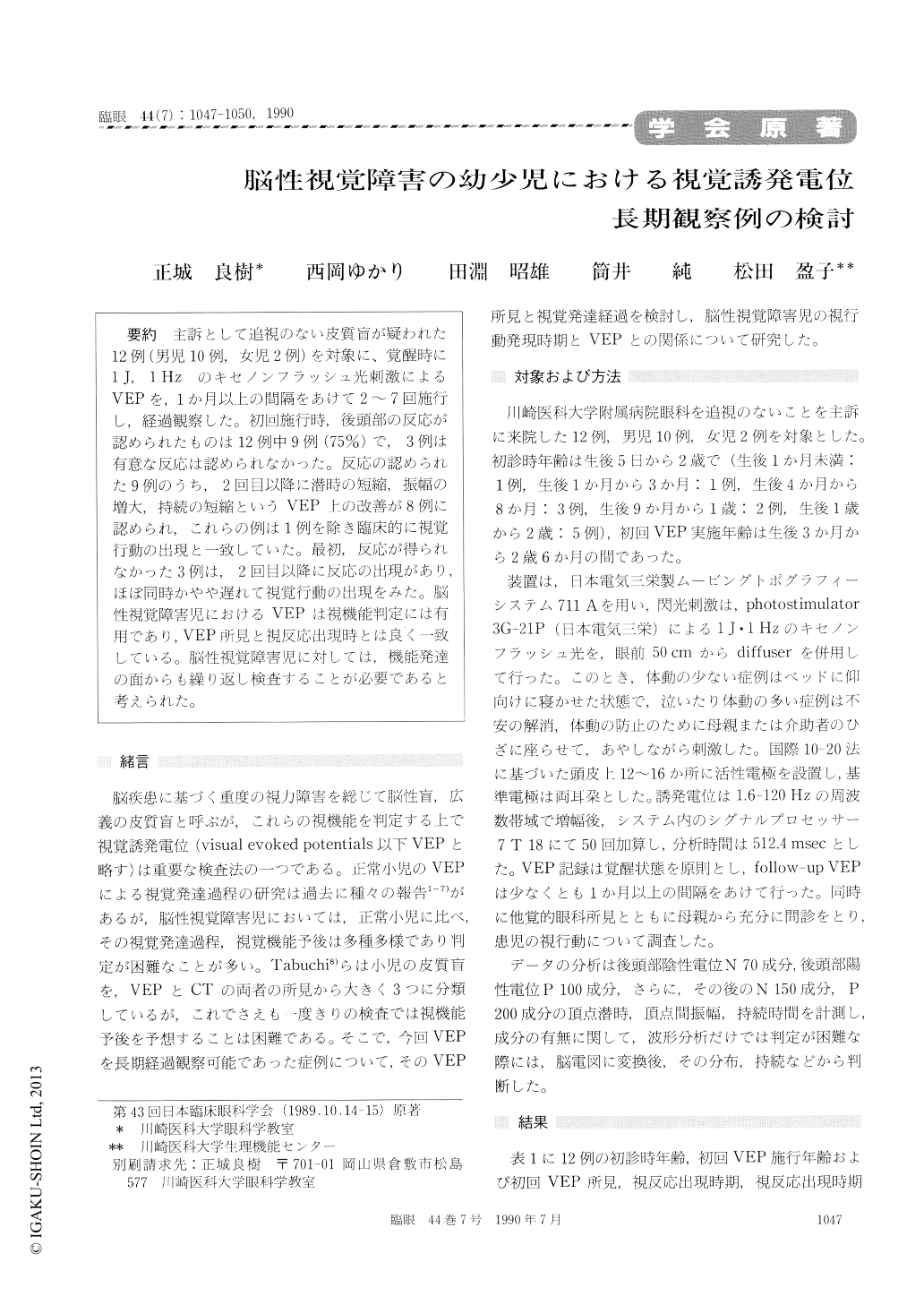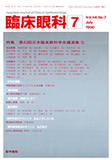Japanese
English
- 有料閲覧
- Abstract 文献概要
- 1ページ目 Look Inside
主訴として追視のない皮質盲が疑われた12例(男児10例,女児2例)を対象に、覚醒時に1J,1Hzのキセノンフラッシュ光刺激によるVEPを,1か月以上の間隔をあけて2〜7回施行し,経過観察した。初回施行時,後頭部の反応が認められたものは12例中9例(75%)で,3例は有意な反応は認められなかった。反応の認められた9例のうち,2回目以降に潜時の短縮,振幅の増大,持続の短縮というVEP上の改善が8例に認められ,これらの例は1例を除き臨床的に視覚行動の出現と一致していた。最初,反応が得られなかった3例は,2回目以降に反応の出現があり,ほぼ同時かやや遅れて視覚行動の出現をみた。脳性視覚障害児におけるVEPは視機能判定には有用であり,VEP所見と視反応出現時とは良く一致している。脳性視覚障害児に対しては,機能発達の面からも繰り返し検査することが必要であると考えられた。
We evaluated the flash visual evoked potentials (FVEP) in 12 infants with suspected cortical blind-ness. All the cases failed to manifest following eye movement. The ages ranged from 3 months to 30 months at the first FVEP session. FVEP examina-tion was repeated 2 to 7 times at an interval of 1 month or more. FVEP was elicited with a xenon flash with 1 J intensity and 1 Hz frequency, and was recorded with 12 electrodes after the international10-20 method.
At the first recordings. occipital P100 component was present in 9 cases, 75%. VEP findings improved in 8 of the 9 cases from the second examination on. Clinical behavior improved in 7 of these 8 cases.
In the remaining 3 cases, VEPs became recorda-ble from the second examination on, associated with improved visual behavior.
VEP was thus useful in assessing the visual func-tion in infants with cortical blindness. Repeated VEP examination in advocated to evaluate the course of visual development.

Copyright © 1990, Igaku-Shoin Ltd. All rights reserved.


